Anal fistula
An anal fistula is a small tunnel that connects an abscess, an infected cavity in the anus, to an opening on the skin around the anus.

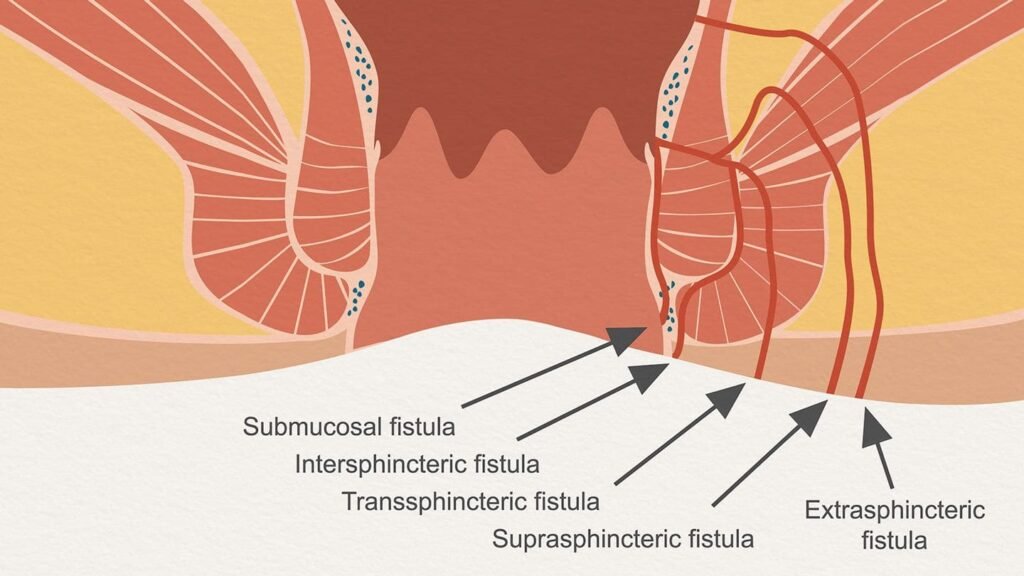
Causes
- The leading causes of an anal fistula are clogged anal glands and anal abscesses.
- Crohn’s disease (an inflammatory disease of the intestine)
- Radiation (treatment for cancer)
- Trauma
- Sexually transmitted diseases
- Tuberculosis
- Diverticulitis (a disease in which small pouches form in the large intestine and become inflamed)
- Cancer
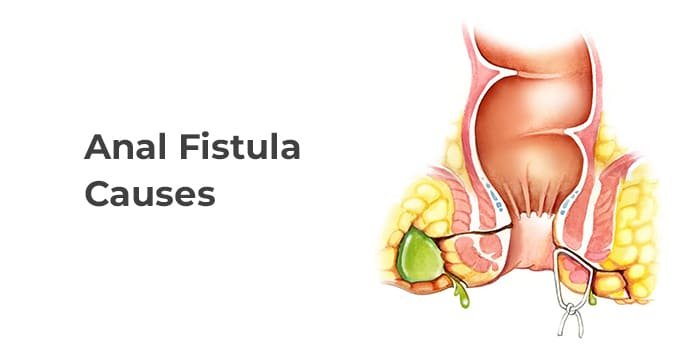


Symptoms
- Frequent anal abscesses
- Pain and swelling around the anus
- Bloody or foul-smelling drainage (pus) from an opening around the anus. The pain may decrease after the fistula drains.
- Irritation of the skin around the anus from drainage
- Pain with bowel movements
- Bleeding
- Fever, chills, and a general feeling of fatigue
Diagnosis And Test
- Your Surgeon can usually diagnose an anal fistula by examining the area around the anus. He or she will look for an opening (the fistula tract) on the skin. The Surgeon will then try to determine how deep the tract is, and the direction in which it is going. In many cases, there will be drainage from the external opening.
Some fistulas may not be visible on the skin’s surface. In this case, your Surgeon may need to perform additional tests:
- An anoscopy is a procedure in which a special instrument is used to see inside your anus and rectum.
- Your surgeon may also order an ultrasound or MRI of the anal area to get a better view of the fistula tract.
- Sometimes your surgeon will need to examine you in the operating room (called exam under anaesthesia) to diagnose the fistula.
- Colonoscopy may be needed to rule out other causes like Crohn’s Disease.
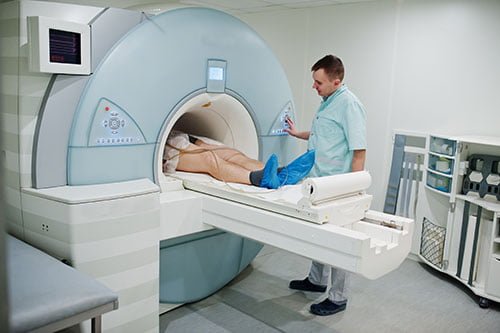
Management and Treatment
Surgery is always necessary to cure an anal fistula.
Fistulotomy:
- Fistulas in which there is no, or little sphincter muscle involved are treated with a fistulotomy. In this procedure, the skin and muscle over the tunnel are cut open to convert it from a tunnel to an open groove. This allows the fistula tract to heal from the bottom up.
- In the case of a more complex fistula, the surgeon may have to place a special drain called a seton, which remains in place for at least 6 weeks. After a seton is placed, a second operation is always performed:
- Laser Fistula surgery can be performed for uncomplicated fistula
- Fistula surgery is usually done on an outpatient basis, which means the patient can go home the same day. Patients who have very large or deep fistula tunnels may have to stay in the hospital for a short time after the surgery. Some fistulas may require several operations to get rid of the fistula.
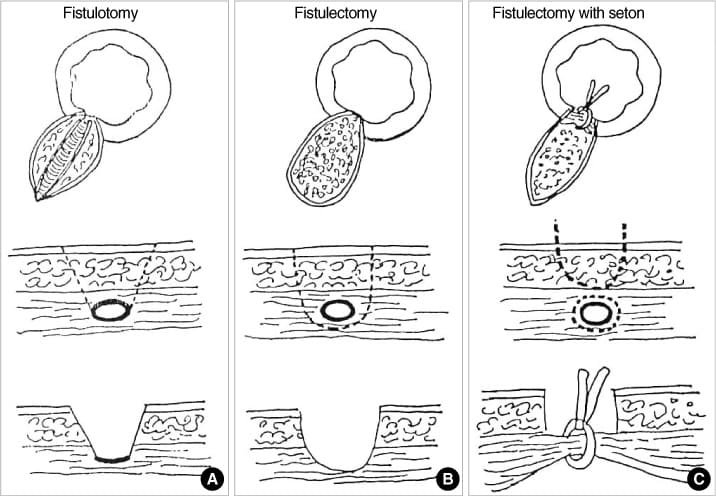
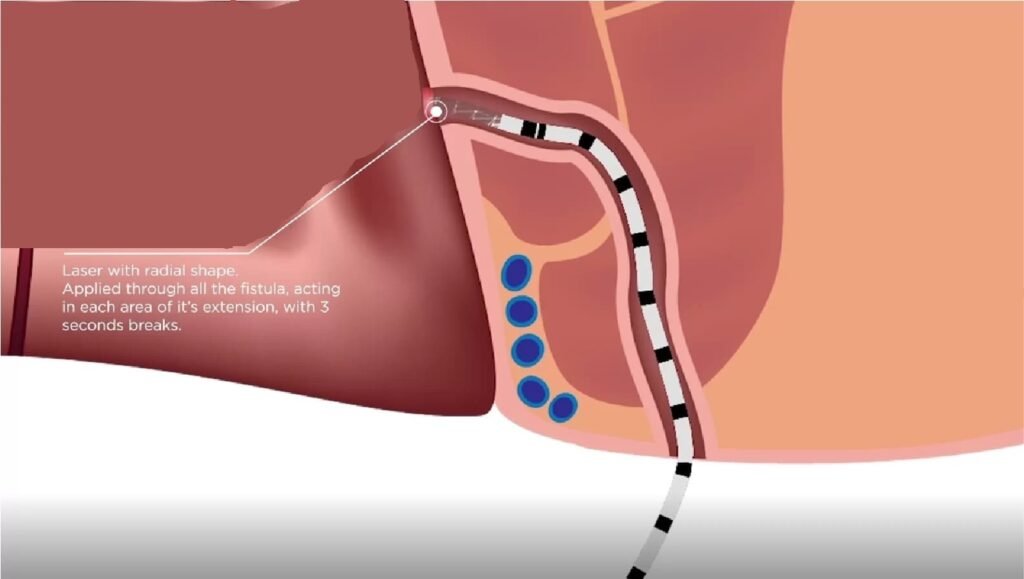
Follow-up:
Most fistulas respond well to surgery. After the surgery, your surgeon may recommend that you soak the affected area in a warm bath, known as a sitz bath, and that you take stool softeners or laxatives for a week.
Since you may also have some pain or discomfort in the area after surgery, your Surgeon will usually inject local anaesthetic such as lidocaine to decrease your discomfort and may prescribe pain pills. If the abscess and fistula are treated properly and heal, they will not come back. Complex Fistula surgery has high chances of recurrence.
